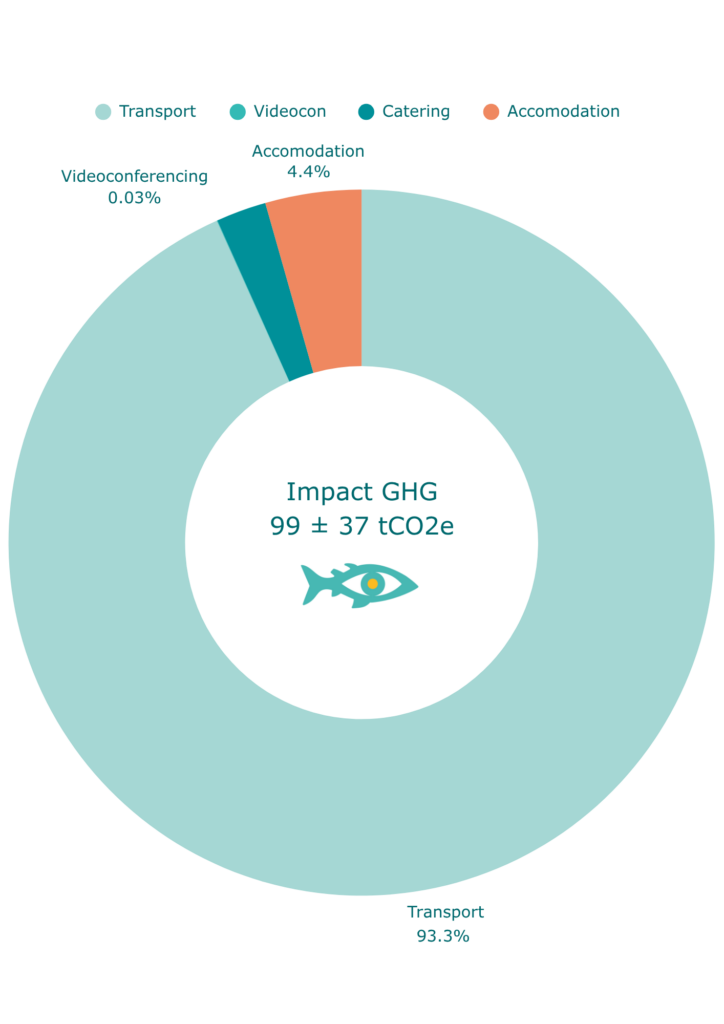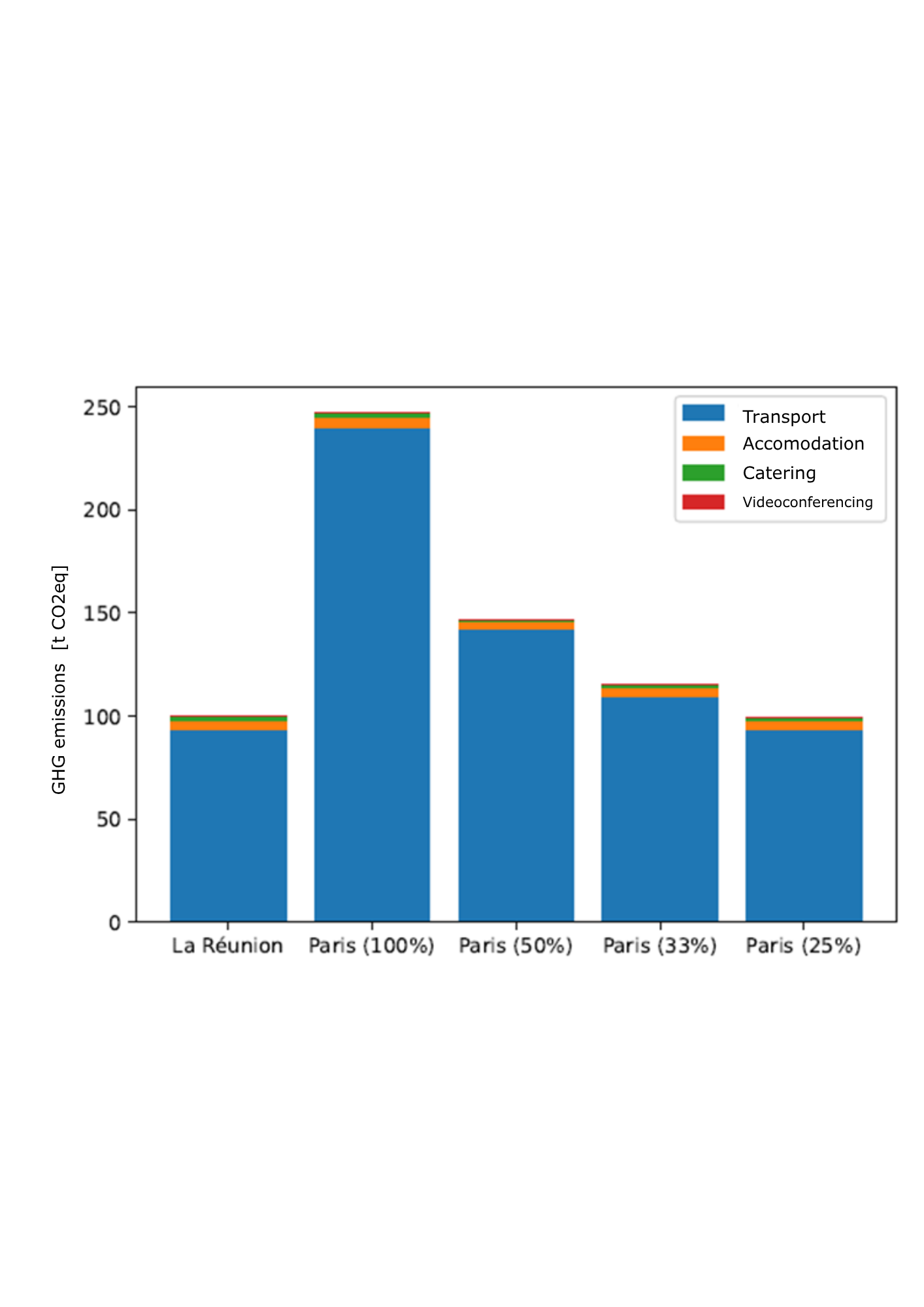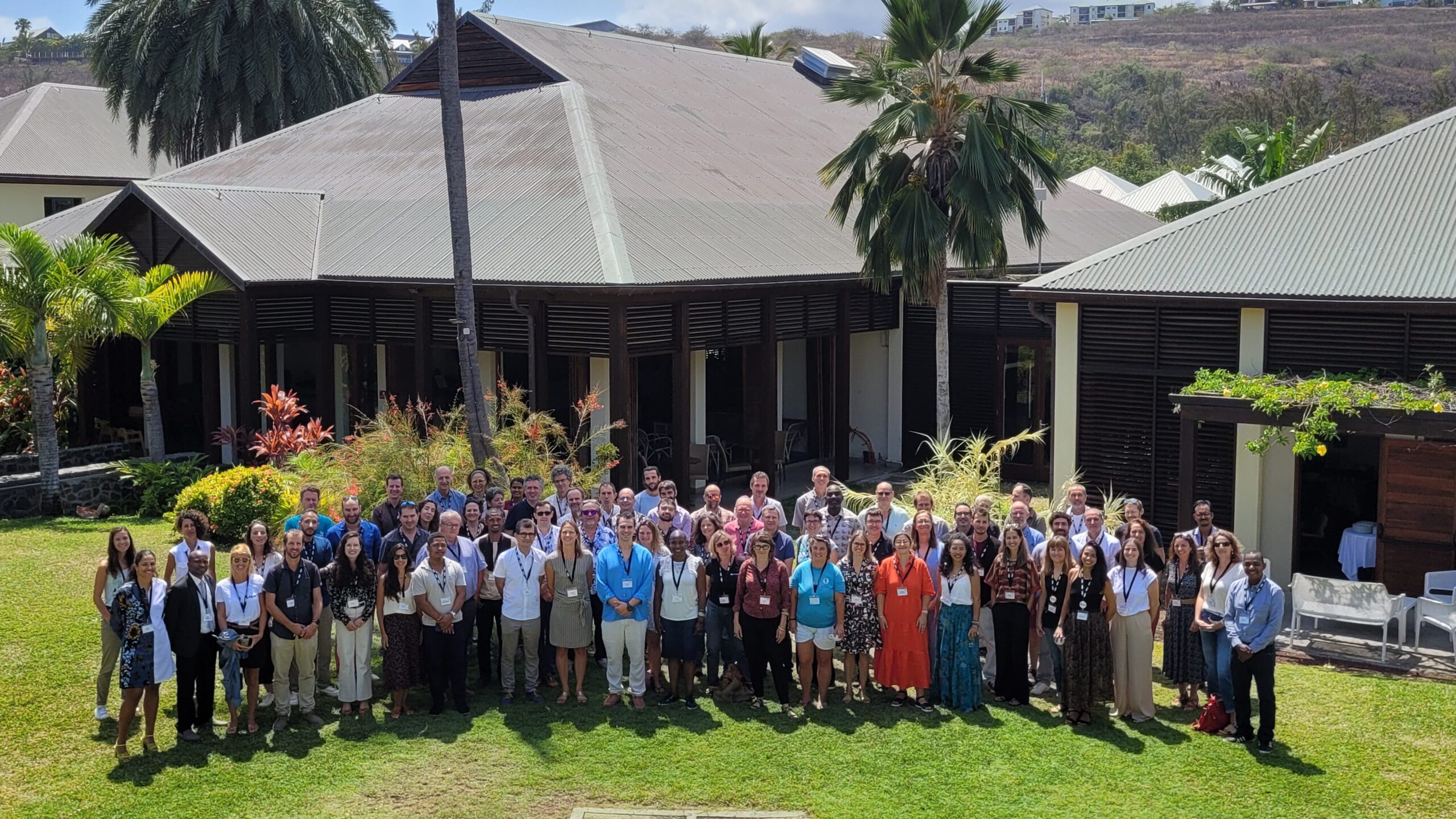
Assessment and reflection on the “carbon impact” of the BRIDGES scientific launch
The scientific kick-off event of the BRIDGES research program was held in September 2024 on the island of La Réunion, bringing together around a hundred participants on site. As early as the preparatory phase, the question of the meeting’s “carbon footprint” was raised.
With this in mind, the targeted BRIDGES-IMPACT project, tasked with monitoring the environmental impact of the program as a whole, decided to assess the greenhouse gas (GHG) emissions associated with organizing this event in La Réunion, in comparison with a French mainland alternative, such as Paris.
The aim is twofold: to provide food for thought on the strategy for reducing the “carbon footprint” of future gatherings, and, more broadly, of the program as a whole.
How do we measure the “carbon footprint” of an event?
The greenhouse gas footprint (GHG) of the kick-off meeting was assessed on the basis of four main emission items: transport, accommodation, catering and videoconferencing.
These estimates concerned the 111 people physically present and the 60 remote participants.
Transport-related emissions were assessed using the Labos 1point5 method, assuming that all participants from outside La Réunion took the plane. Journeys by people living in La Réunion were excluded from the calculation, assimilated to usual home-work journeys.
Results:
- Transport accounted for 93 tCO2e (±37%).
- Accommodation, estimated at 20 kgCO2e per night according to the Cornell Hotel Sustainability Benchmarking Index 2024, generated 4.4 tCO2e (±50%, based on 5 nights for non-residents of the island).
- Catering, including meat and fish meals and breaks, added 2.3 tCO2e (±50%), again according to the Labos 1point5 methodology.
- Finally, videoconferencing, used by some sixty remote participants for around 35 hours of meetings, represents 25 kgCO2e (±30%), according to the Greenspector tool.
Emissions linked to other organizational elements (“goodies”, printing, supplies, etc.) have not been accounted for, as they are considered negligible in the total.
Results & discussion
The overall greenhouse gas balance for the event was 99 ± 37 tCO2e, the vast majority of which was attributable to air travel (see Fig. 1), corresponding to approximately 0.579 ± 0.216 tCO2e per participant[1].
[1] By way of illustration, this corresponds to just over 5% of the average annual “carbon footprint” of a French person (around 10 tCO2e).

Figure 1: Carbon footprint of the BRIDGES scientific kick-off event in La Réunion in September 2024.
This observation raises a legitimate question: would holding the event in mainland France (in Paris, for example) have reduced its “carbon footprint”? To answer this question, a simulation was carried out, assuming that the same list of participants had travelled to Paris.
The result: organizing the meeting in Paris would have emitted a total of 240 tCO2e (±37%, see Fig. 2), despite the use of the train for journeys from Montpellier, Marseille, Grenoble, Nantes, Strasbourg, Brest and Sète.
With emissions from accommodation and catering remaining similar, this scenario results in an impact 2.5 times greater than that observed on Reunion Island. This difference is explained by the high level of local participation: around 60% of attendees were based in La Réunion.
Three alternative scenarios were considered:
- if 50% of the participants from La Réunion had made the trip, the balance sheet would have reached 147 tCO2e,
- with 33%, it would have fallen to 115 tCO2e,
- and with only 25%, we would have returned to a level equivalent to that observed in La Réunion, around 99 tCO2e.
However, the latter scenario is considered unlikely, given the scientific and institutional stakes involved in hosting the event. These simulations do not take into account potential additional travel by people located in France who followed the launch by videoconference and who, in the case of an event held in Paris, would have attended in person, thus further increasing the impact of a launch meeting in Paris.

Figure 2: Simulations of the GHG footprint of the BRIDGES scientific launch had it taken place in Paris, with a variable number of in-person participants.
In conclusion, the organization of the event in Paris would have been equivalent in terms of “carbon impact” only if 25% of participants from La Réunion had made the trip, a scenario considered unlikely given the nature of the event.
Recommendations for reducing “carbon impact”
In the light of these results, and in view of the urgent need to mitigate global warming, BRIDGES can draw a number of lessons and concrete guidelines for the organization of future events:
- Choose meeting venues based on the geographical origin of the majority of participants, in order to limit air travel, which is the main source of emissions.
- Videoconferencing, which emits very little (up to 7,000 times less than a flight, according to Skiles et al., 2022), can be favored in cases where it does not hinder the smooth running of the event. Local “hubs” can be organized to reduce long-distance travel.
- Combine long-distance travel with other activities to limit the number of trips made close together in time, or the total number of trips over the duration of the project.
- Favoring vegetarian or vegan meals, which emit up to five times less than meat meals.
Knowing that each ton of CO2 contributes to increasing ocean acidification, which in turn affects all marine biodiversity, on which 3 billion people depend for their livelihoods, how can we carry out such important research programs on a planetary scale while minimizing our contribution to the problem? To do so, we’ll need to innovate and invent new, more sustainable practices, while preserving the vital social interactions between partners.
To find out more
Gratiot et al., 2023, PLOS Sustainability and Transformation
Mariette et al., 2022, Environmental Research: Infrastructure and Sustainability
Étudier la terre sans la détruire davantage
Skiles et al., 2022, Nature Sustainability
Authors : Alexandre Santerne, Nicolas Champollion, Matthieu Le Duff & Nicolas Gratiot
Contacts:
nicolas.champollion@univ-grenoble-alpes.fr
More news News


